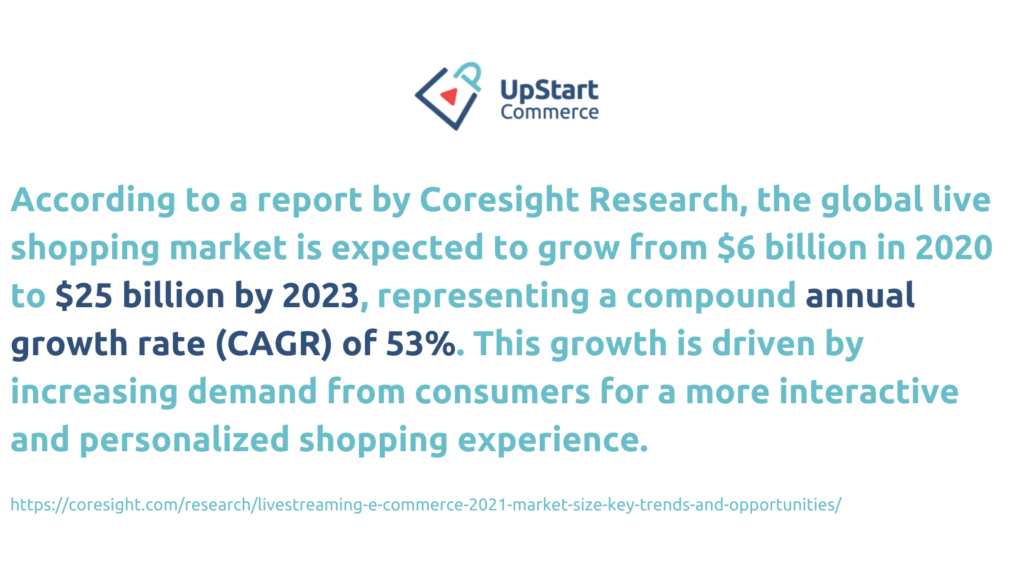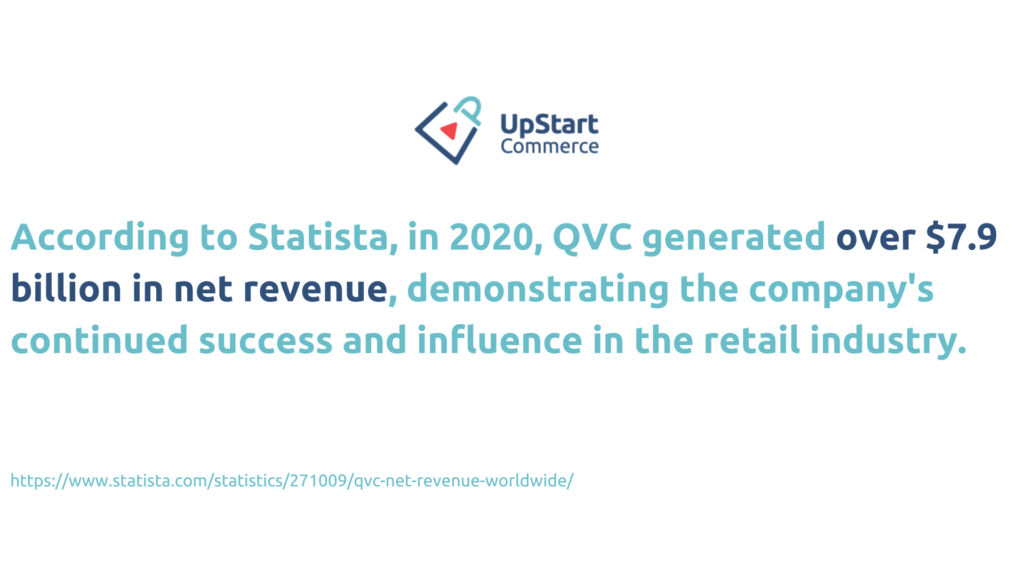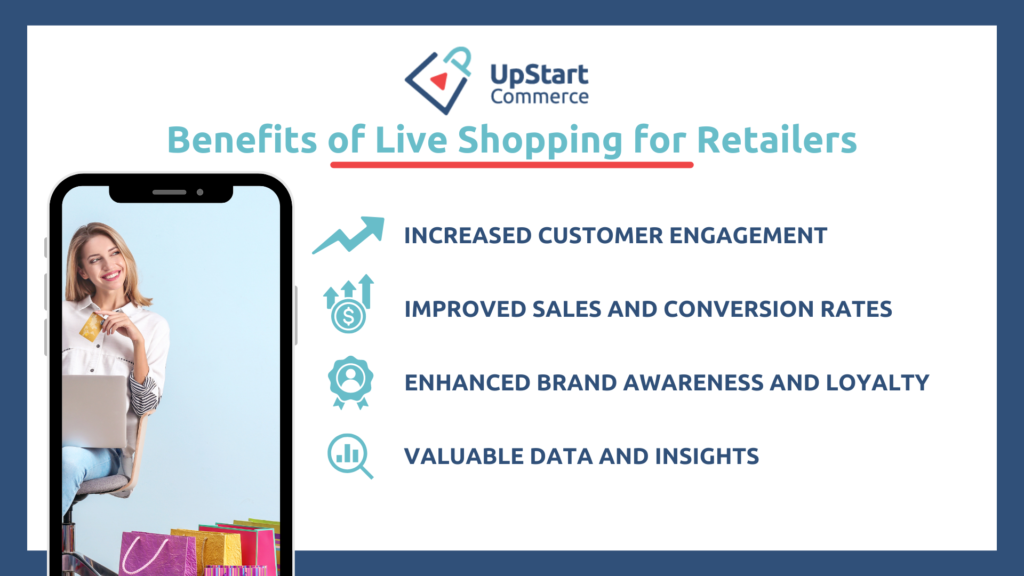In the past, shopping was often seen as a solitary activity, with customers browsing through products on their own before making a purchase. However, with the rise of technology and social media, shopping has become more interactive and engaging than before. One of the latest trends in ecommerce is live shopping events, where customers can join a live stream and shop in real time. Live shopping allows retailers to showcase their products in an interactive manner, creating a personalized shopping experience for customers.
In this blog, we’ll explore the rise of live shopping, the impact of QVC on the trend, and its benefits for retailers. We’ll also discuss the requirements for adopting live shopping and provide some encouragement for retailers to embrace this trend in 2023.
Live shopping is a unique approach to ecommerce that involves broadcasting live shows featuring products for sale. These shows are typically hosted by influencers, brand ambassadors, or salespeople who showcase products and interact with customers in real time. Customers can watch the live stream, ask questions, and purchase products directly through the platform.
The popularity of live shopping has grown rapidly in recent years, with many retailers seeing the benefits of this approach. It provides a more personalized and interactive shopping experience for customers, which can lead to increased sales and customer loyalty. Plus, it allows retailers to showcase their products in a new and innovative way.
QVC, the American television network, has played a significant role in the rise of live shopping. QVC was founded in 1986 and is known for its live shows that showcase a wide range of products. The network has been a pioneer in live shopping, introducing innovative technologies and strategies that contributed to its success.
Now, many retailers are adopting the QVC approach to live shopping. They use social media platforms and other online channels to reach customers. With technological innovations and the popularity of social media, it is becoming one of the most important trends in ecommerce.

Live has been gaining traction globally and is projected to grow significantly in the coming years. One of the most successful examples of live shopping is Taobao Live, a platform launched by Alibaba in 2016. Taobao Live enables businesses and influencers to host live streams and sell products directly to consumers. In 2020, Taobao Live generated $60 billion in gross merchandise volume (GMV). This accounts for 4.5% of Alibaba’s total GMV for the year. This success has prompted other ecommerce platforms to adapt also, including Amazon Live and Facebook Live Shopping.
The rise of virtual shopping was also accelerated by the COVID-19 pandemic, increasing online shopping and the demand for more engaging experiences. Retailers who adopted live shopping have seen significant benefits. Benefits include increased customer engagement, higher sales, and conversion rates, enhanced brand awareness and loyalty, and personalized commerce experiences.
QVC stands for Quality Value Convenience and is a leading television network that specializes in home shopping. The company was founded in 1986 and has since become a household name, with millions of Americans tuning in to watch their live broadcasts. One of QVC’s most significant contributions to this trend is its use of video to showcase products. Before QVC, television was primarily used for advertising, and there was no live shopping channel in the US. However, QVC changed the game by bringing products to life through live demonstrations and product showcases. They allow customers to see products in action before making a purchase.

Another critical component of QVC’s success is the community of loyal customers they have built over the years. By engaging with customers through live shows, QVC has developed a following of loyal shoppers. Their audience trusts the network’s product offerings and enjoys the personalized experience. This strategy translated well into the interactive shopping trend, where building a community of engaged customers is essential for success.
QVC’s use of hosts to present products and engage with customers has also become a staple in livestream selling. QVC hosts are trained to be knowledgeable about products and to engage with customers in a friendly and informative manner. They provide an enjoyable and personalized shopping experience. This approach has been adopted by many other retailers; it has proven to be an effective way to drive sales.
Increased customer engagement
Live shopping events provide customers with an immersive and interactive experience that keeps them engaged for longer periods of time. Real-time interaction with hosts or influencers allows customers to ask questions and receive answers. This can help them make more informed purchase decisions. By providing this kind of engagement, retailers can build trust with customers, leading to increased brand loyalty.
Improved sales and conversion rates
As customers watch hosts or influencers demonstrating and discussing products, they become more familiar with the products. Therefore, they are more likely to make a purchase. Additionally, live shopping events can create a sense of urgency among customers. These events often have limited-time offers and exclusive discounts. This can encourage customers to purchase they may have otherwise delayed, leading to higher conversion rates.
Enhanced brand awareness and loyalty
By providing a unique and personalized shopping experience, retailers can differentiate themselves from their competitors and build a loyal customer base. Customers are more likely to remember a brand that provided them with a memorable and enjoyable shopping experience. Live shopping events often feature influencers or brand ambassadors, who can help increase brand visibility and attract new customers.
Valuable data and insights
Live shopping can provide retailers with valuable data and insights into customer behavior and preferences. By tracking customer engagement and sales metrics, retailers can identify which products are most popular and adjust their inventory accordingly. They can also gain insights into customer preferences and use that data to create more personalized marketing campaigns.

To successfully implement live shopping, retailers need to consider a variety of factors, including the necessary technology and personnel. First and foremost, retailers will need to invest in the appropriate equipment and software to support live streaming, such as cameras, microphones, and streaming software. For example, retailers may need to purchase high-quality cameras to capture detailed images of products, as well as microphones to ensure clear audio during live broadcasts.
In addition to technology, retailers will also need to have a dedicated team to manage these events. This team may include hosts or influencers to showcase products and interact with customers, as well as producers to manage the technical aspects of the live stream, such as camera angles and audio levels. Retailers may also need social media managers to promote livestreamed events on social media platforms and engage with customers in real time.
One example of a retailer that has successfully adopted live shopping is Sephora. The beauty retailer regularly hosts livestream shopping events on its website and social media platforms, featuring popular beauty influencers showcasing new products and offering makeup tutorials. Sephora also offers personalized recommendations and advice through its virtual Beauty Advisor feature, which allows customers to chat with Sephora experts and receive personalized product recommendations.
Retailers will also need to consider other factors such as the timing and duration of live shopping events, as well as the types of products to feature. For example, retailers may choose to host live shopping events during peak shopping hours to maximize engagement and sales and may focus on featuring popular or seasonal products to appeal to customers.
Overall, successfully adopting live shopping requires a combination of technology, personnel, and strategy. By investing in the necessary resources and developing a strong team and plan, retailers can leverage these benefits to engage with customers, increase sales, and build brand loyalty.
Conclusion
In conclusion, live shopping is a rapidly growing trend in the retail industry that offers numerous benefits for retailers, including increased customer engagement, improved sales and conversion rates, enhanced brand awareness and loyalty, and personalized customer journeys. With the growth of ecommerce and the rise of social media, virtual shopping is becoming an increasingly popular way for retailers to connect with their customers.
Retailers can provide an interactive and immersive shopping experience for their customers, allowing them to ask questions and receive answers in real time. This creates a sense of community and engagement, which can help build lasting relationships with customers. Additionally, live shopping events can create a sense of urgency, with limited-time offers and exclusive discounts, leading to higher conversion rates and increased sales.
However, adopting live shopping requires retailers to invest in the necessary technologies and personnel, such as streaming software, cameras, and microphones, as well as a dedicated team of hosts, producers, and social media managers. Retailers must also carefully plan and execute their live shopping events to ensure a seamless and engaging experience for their customers.
The benefits of live shopping for retailers are clear, and with the right technology investment and execution, it can be a valuable addition to any retailer’s ecommerce strategy. As the retail industry continues to evolve, virtual shopping will likely become an increasingly important tool for engaging customers and driving sales.
